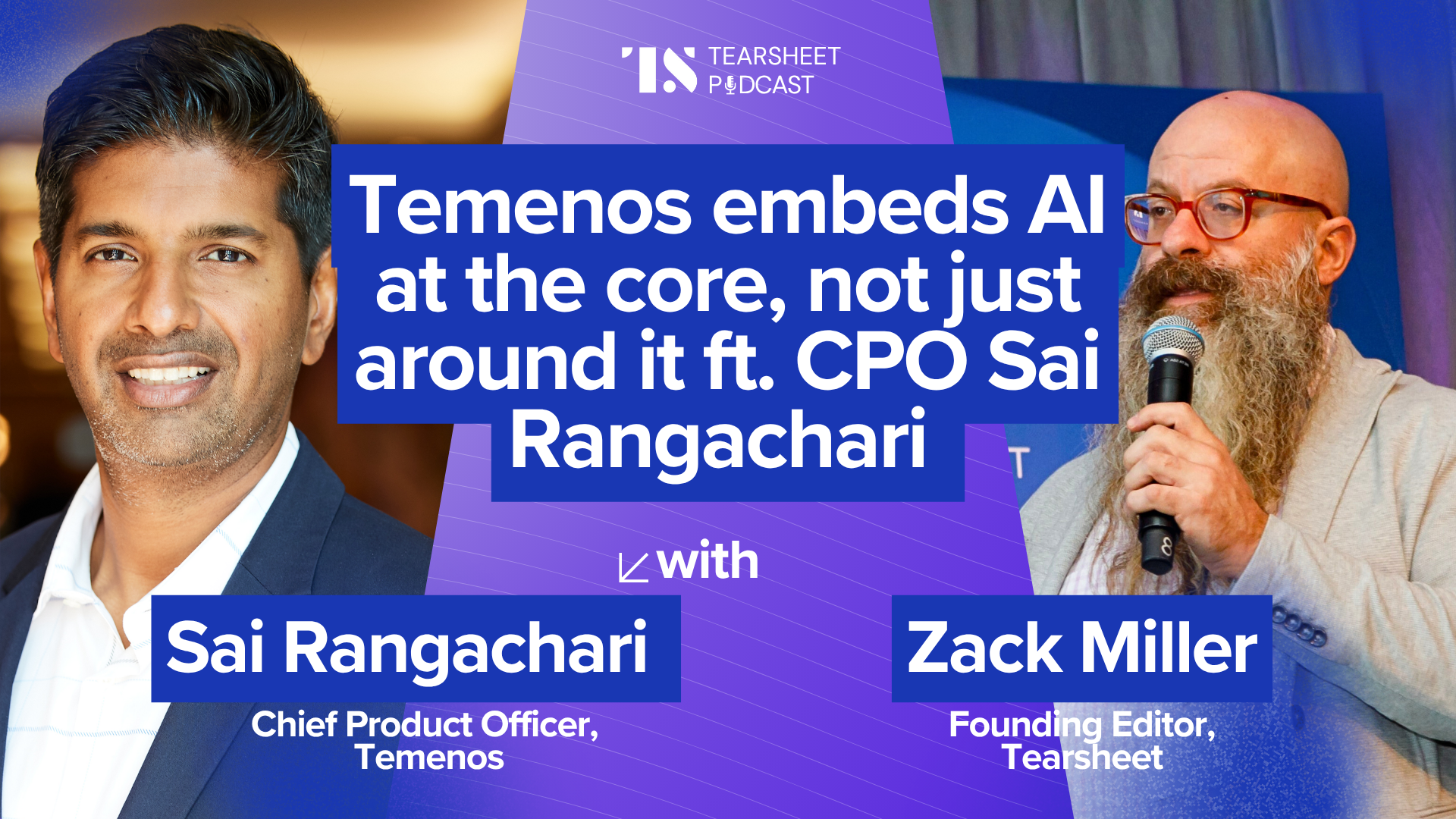Temenos embeds AI at the core, not just around it ft. CPO Sai Rangachari
- In a sector where AI is promising a significant leap forward, financial institutions demand speed — with safety. Temenos has a track record of innovation and the customer trust to bring AI into the core of banking.
- In this episode, CPO Sai Rangachari discusses why traditional technology providers are in a better position to help banks integrate AI than fintechs, how Temenos’ AI strategy could change the way we experience retail banking, and where he sees traditional providers’ competitive advantage.

In a sector where AI is promising a significant leap forward, financial institutions demand speed — with safety. Temenos has a track record of innovation and the customer trust to bring AI into the core of banking.
Chief Product Officer Sai Rangachari is just nine months into his role at Temenos, but his mandate is sweeping: simplify product experience, co-create with banks, and embed AI across the entire platform.
“There are three things that you hear from leadership and customers. Number one is product experience, resiliency, availability — investing more in making it easier to consume,” he said. “The second one is co-creation. Customers want to give us more advice. They want to be in the room. They want to help shape the products. Ultimately, they are the users so we welcome it.”
The third undertaking is layering AI across Temenos’ entire product suite. With Product Manager Copilot, FCM AI Agent and AI Studio, Temenos is helping clients simplify workflows and enhance decision-making, and giving them the flexibility to build and scale their own AI use cases within a trusted, regulated environment.
In this episode, Rangachari discusses why traditional technology providers are in a better position to help banks integrate AI than fintechs, how Temenos’ AI strategy could change the way we experience retail banking, and where he sees traditional providers’ competitive advantage.
Listen to the podcast
Subscribe: Apple Podcasts I SoundCloud I Spotify
The race to AI: Fintechs versus traditional providers
Global venture capital investment in AI startups reached $100 billion last year. However, Rangachari said that many fintechs have a major problem — the technology gap between them and incumbents is too wide. Often, their solutions aren’t built to integrate deeply into legacy core banking systems.
“Their nemesis has been their ability to sell into large organizations,” he noted. “Even if they’re successful in selling, actually implementing the solutions is really hard, because you’re dealing with the surrounding systems that are 20-40 years old, and you’re also dealing with processes that are just as old as well.”
While fintechs can move faster with customer-facing AI applications, core banking providers like Temenos can embed AI into banking operations with far less friction since their core banking platforms are already integrated in the daily operations of many banks.
“We’re already built into the foundation of banking,” Rangachari said. “So for us to embed AI into our products [means] they’re more immediately usable for the customers.”
AI-powered banking
The company is deploying AI in three “buckets”: Generative AI, agentic AI and explainable AI. Through Product Manager Copilot, the company is embedding Gen AI in its platform, simplifying how users interact with Temenos’ platform and helping banks design, refine, and launch retail products more efficiently.
“Rather than write complicated SQL to get the data or work with pre-baked components for reports, you can go and chat with Copilot and it will write the SQL,” Rangachari said. “It will also create the explainable AI component so you’ll have the right audit trails and it’ll get you the data.”
Temenos’ agentic AI sanction screening solution is already in use at a Tier 1 bank. Operating as a compliance engine, roughly 20-25% of that bank’s transactions now run through the agent, and early results show a drop in false positives, from 6-8% to just 2%.
The company’s third key investment is in AI Studio, a platform that empowers clients to build their own AI use cases on top of a trusted, compliant foundation. Whether the desired use case is currently on Temenos’ product roadmap or not, banks now have the flexibility to innovate at their own pace.
“I just came off a conversation where the client was saying, ‘Don’t go trying to solve my journey for me, because you don’t really know my customers — give me more building blocks,’” Rangachari recalled. “Rather than make it a binary conversation, we’re now giving them AI Studio so they can build their own team and get the same platform that underpins us to power their AI strategy as well.”
The future of AI in retail banking
Temenos recently conducted research with its clients and prospects, finding that banks are heavily focused on driving efficiency. Rangachari noted that one client, for example, was leveraging AI for tasks like document management and data integrity, and had already reduced business banking account opening from several weeks to just minutes. “A lot of our forward leaning banks are embracing this whole [copilot] mindset: the future is human and AI agents working together,” he said.
When AI helps onboarding time change so drastically, banks can edge out rivals competing for the same customers. Rangachari sees this kind of efficiency seeping into other banking functions, like loan origination — historically a multi-step, multi-agent process. Ideally, AI agents will be involved in the underwriting process to eliminate redundancies and deliver a streamlined, personalized experience.
While it’s easier to deploy AI in greenfield digital banks, Rangachari believes the opportunity for technology providers like Temenos is to transform established institutions with decades of legacy infrastructure and tens of millions of customers. For these banks, compliance is non-negotiable.
“Hallucination is a real issue. Explainability is a real issue…equally important, they have surround systems that are decades old, and they need that confidence,” Rangachari explained. “Trust is important. Experience is important…how you solve for that is going to be key.”


